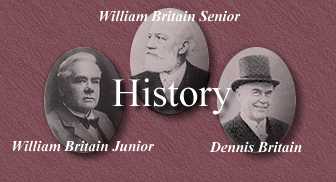
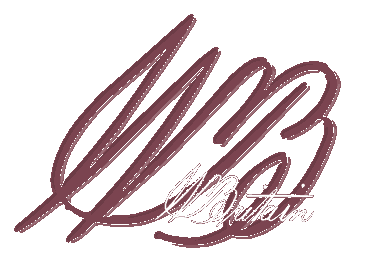

The Business of Britains Limited , incorporated on 4 December 1907 was initiated some sixty years earlier by William Britian (1828 - 1906), an ingenious toymaker from the Midlands. After moving to a large house at 28 Lambton Road, Hornsey Rise, in North East London, he began a small but thriving trade.
Then, as now, the toy trade was a fairly risky business and there was strong competition in mechanical toys, which were produced both in Great Britain and on the continent of Europe. In the early 1890s, William Britain and his sons sought a specialty which would give them a positive advantage over their rivals. One idea they considered was toy soldiers, in which there was a substantial import trade from Germany.
William Britain Junior (1860 - 1933), the eldest son, is credited with having invented - after some experimentation - the hollow casting process for manufacturing toy soldiers. Hollow parts were already used on a number of existing Britains' toys and, doubtless, this experience helped enormously. However, applied to the manufacturer of toy soldiers, hollow casting was totally revolutionary and gave the Britain family the sort of competitive edge it had been seeking.

In 1883,
when the Britain family put it's new toy on the market, the younger
generation consisted of two daughters, Emily (the eldest child) and Anne,
and five sons - William Britain Junior followed by Alfred, Frederick,
Frank and Edward. In the early years, they all took part in the business,
although later, when success was assured, the daughters and the two
youngest sons went their own way.
Imports from Germany dominated the toy soldier market and, as often happens today, it was difficult for a new type of model from a comparatively unknown source to establish a commercial foothold. No doubt William Britains' connections with the toy trade stood him in good stead and, after an understandably slow beginning, the problem soon became how to produce enough models to satisfy the demand - a new experience for the company, since it had previously traded in a small way.
Albert Gamage and his celebrated store in Holborn, London - then one of the largest outlets for toys in the country and especially renowned for it's Christmas displays - played a crucial part in Britains' success. Gamage immediately started to stock the new Britains' lines. Following his new policy, he sold the toy at well below the recommended price at ten pence halfpenny instead of one shilling. As Britains extended its range, Gamages continued to buy, reducing it's stock of German imports, and by 1906 the toy soldiers featured in Gamages' catalogue were virtually exclusively manufactured by Britains.
Imports from Germany dominated the toy soldier market and, as often happens today, it was difficult for a new type of model from a comparatively unknown source to establish a commercial foothold. No doubt William Britains' connections with the toy trade stood him in good stead and, after an understandably slow beginning, the problem soon became how to produce enough models to satisfy the demand - a new experience for the company, since it had previously traded in a small way.
Albert Gamage and his celebrated store in Holborn, London - then one of the largest outlets for toys in the country and especially renowned for it's Christmas displays - played a crucial part in Britains' success. Gamage immediately started to stock the new Britains' lines. Following his new policy, he sold the toy at well below the recommended price at ten pence halfpenny instead of one shilling. As Britains extended its range, Gamages continued to buy, reducing it's stock of German imports, and by 1906 the toy soldiers featured in Gamages' catalogue were virtually exclusively manufactured by Britains.
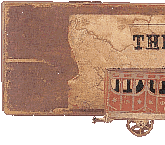
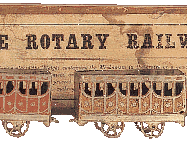
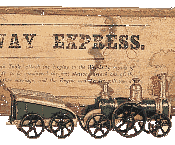
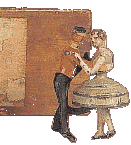
A notice at the top of the first page devoted to toy soldiers in this 1906 catalogue stated: "English made toy soldiers - we hold a stock of 500,000 soldiers of all nations but owing to the exceptional demand at Christmas time, customers are urged to give their as early as possible to prevent any possibility of delay."
In this same year, 1906, Britains introduced giant display boxes, which were an immediate success.
Another quotation from the same catalogue indicates a second and equally important reason from Britains' success:
"All of our soldiers are made exact to scale, that is a Foot Soldier is the same as a Horse Soldier, and Horses are in proportion to men; whilst the Uniform and Colorings have been most carefully considered and will be found perfectly correct in all details."
From the start, the soldiers were standardised on a scale equivalent to the most popular size of toy train at that time, which was known as gauge! This meant producing a man 54mm (2.25") tall. It is a measure of the influence that Britains had on the entire toy and model soldier market that this measure is still known as the standard scale: all toys and models are measured in millimetres as the height of an ordinary infantry man without headgear. The company also manufactured a smaller size measuring 43 mm (1 7/10"), a little smaller than the "0" gauge trains for which they were intended (but in 1912 the height of these smaller models was increased by 2mm so that they conformed exactly with the 0 gauge trains).
With regard to the uniforms, the company went to great lengths in order to obtain accuracy and, on the whole, proved immensely successful - in sharp contrast to the German sets, which had been on sale through wholesalers throughout the 1890s.

The first years of hollow cast production, between 1893 and the turn of the century, were characterised by rapid changes in models, unstandardised box labels and a relatively low level of production. The new century brought expansion and greater standardisation. The original house in Lambton Road was extended and then the house next door was acquired and another extension built. However, even that was to prove insufficient and the houses were pulled down and replaced by a factory, warehouse and office complex occupying the entire side of a block with a floor area of 36,000 square feet. Some 300 people were now employed on the site.
Between 1900 and 1916, when the factory was converted to war production, standard dated figures were introduced and kept in production for many years. The export trade to the USA and continental Europe was developed and a consistent product range was established. Fred Whisstock was appointed to design the box labels in a single style.
Normal production resumed in 1918, at the end of the First World War and, in response to the prevailing popular mood which turned aside from the horrors of war, the Home Farm range was introduced. In retrospect, the 1920s can be seen as a period of consolidation and preparation for the astonishing performance of the 1930s.
A new factory, known as the North Light Building and of no less than 20, 000 square feet, was designed and erected in Walthamstow. North East London and in 1931 the entire production of the Home Farm Range was moved there. Exports were increased, especially to the USA, and production facilities expanded.
In the 1930s, Britains survived economic depression by developing every money generating product it could think of. New types of model proliferated: zoo; garden; circus; motor vehicles and so forth and many different grades of quality were produced. The 1940 range, marketed just before the company had to again go over to war production, was the largest ever.
The return to normality after the Second World War was slow and it was not until 1953 that a reasonable range was offered. Box labels were standardised to a single "All Nations" design. Almost immediately, plastic began to pose a serious threat. By the mid 1960s it had almost entirely taken over and in 1966, the era of the hollow cast toy soldier finally came to an end - although not before some 1000 million had been manufactured.
In 1959 Herald, the leading manufacturer of plastic toy soldiers, was acquired and with it considerable expertise in the new material. Throughout the 60s, 70s and 80s the success of the Britains continued and the brand name was prominently established. Its range of plastic farm animals and complementary diecast vehicles are worthy upholders of the standards and traditions set long ago. In the 90s, a new range or diecast metal toy soldiers in the old traditional uniforms is being made to satisfy the expanding collectors' market - and some of these collectors happen to be children.
In 1997, Britains was purchased by the Ertl Company who will be developing the range beyond the millenium.